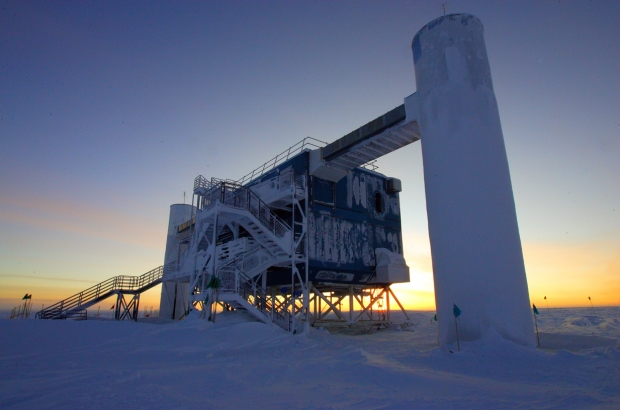- Daily & Weekly newsletters
- Buy & download The Bulletin
- Comment on our articles
Scientists capture smallest subatomic particles
In the ice beneath the South Pole, a giant particle detector called IceCube has captured 28 neutrinos that originated on the other side of the universe. Among the international team that built and operates IceCube are physicists, engineers and computer scientists from the Free University of Brussels (VUB) and the University of Ghent.
Thanks to the massive Antarctic ice sheet, the IceCube detector, which consists of a dense network of more than 1,500 light sensors, was able to capture a handful of some of space’s most intangible subatomic particles. Neutrinos have such little mass they have never been measured accurately, and they barely interact with matter; they literally fly through everything at (nearly) the speed of light. But once in a billion or trillion years, they collide with an ice atom, producing a blue flash of light.
IceCube is built to detect only high-energy neutrinos, which originate outside our solar system. Since it was put into operation in 2010, the detector has caught 28 neutrinos, each of which carries information about distant and powerful phenomena, like pulsars, black holes, supernovas or even the big bang – precisely because neutrinos don’t interact with matter.
That’s why Science, one of the world’s top scientific journals, published the first results of the IceCube experiment on its cover last week. “These neutrinos provide us with a new window on the universe,” says Dirk Ryckbosch, physicist at UGent. “Until now, all our information came from sources of light. By studying these neutrinos, we can access direct information from outside our solar system.”


















